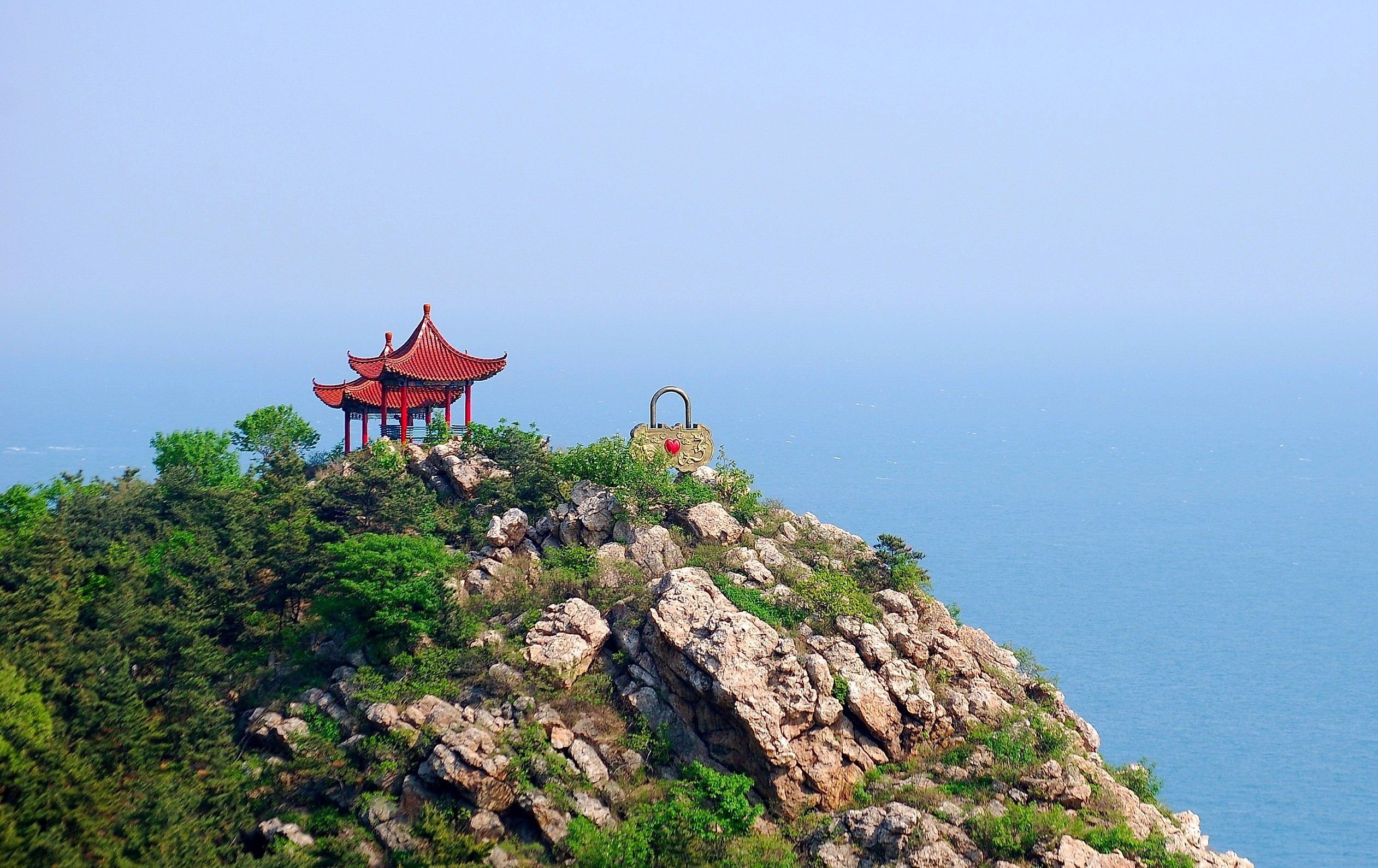
Yellow Sea
The Pacific Ocean is the world’s deepest and largest ocean, covering a total area of 165.2 million km2 and with an average depth of about 4,280 m. Due to its massive size, the Pacific Ocean consists of many marginal seas situated at the coasts of the continents of Asia, Oceania, and the Americas. Covering an area of 380,000 km2, the Yellow Sea is such a marginal sea of the Western Pacific Ocean.
The sea was named for the yellowish sand particles originating from the Gobi Desert that descend on the surface of the sea, thereby giving it a golden yellow color. In addition to this, several Chinese rivers also discharge their sand and silt-laden waters into the sea. Besides the Yellow Sea, there are other seas in the world, namely the Red Sea, White Sea, and the Black Sea, that bear common English colors as their names. The Yellow Sea is also often referred to as ‘Huang Hai’ in China and as ‘West Sea’ in both North and South Korea.
Where Is The Yellow Sea?
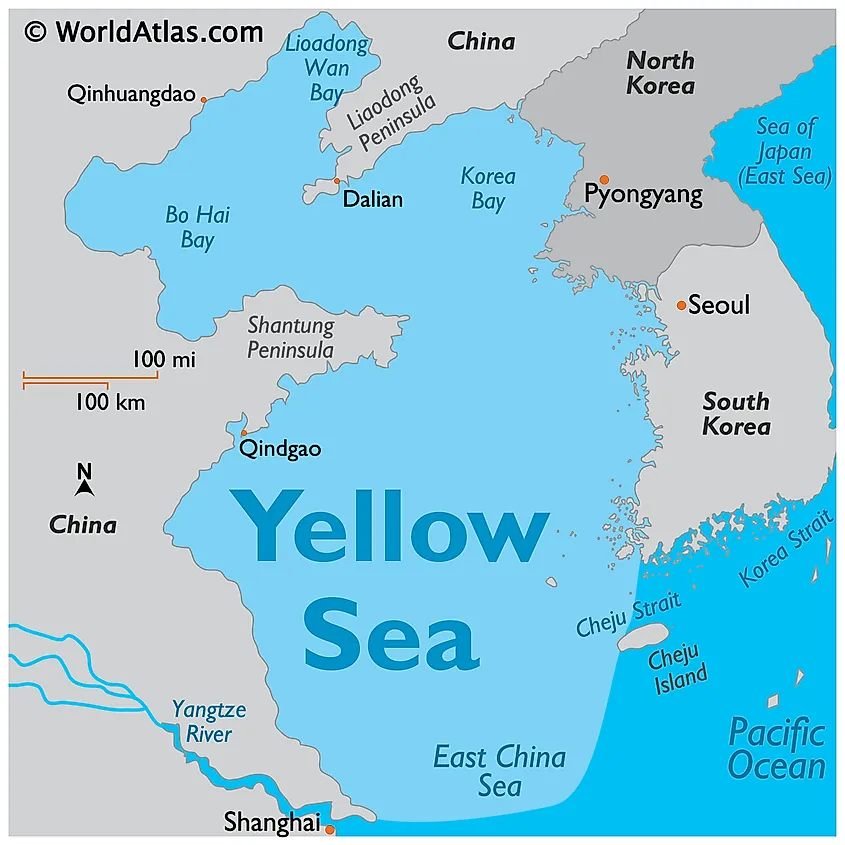
The Yellow Sea is positioned to the north of the East China Sea. It is bordered by Mainland China in the north and west and by North Korea and South Korea in the east.
Geography
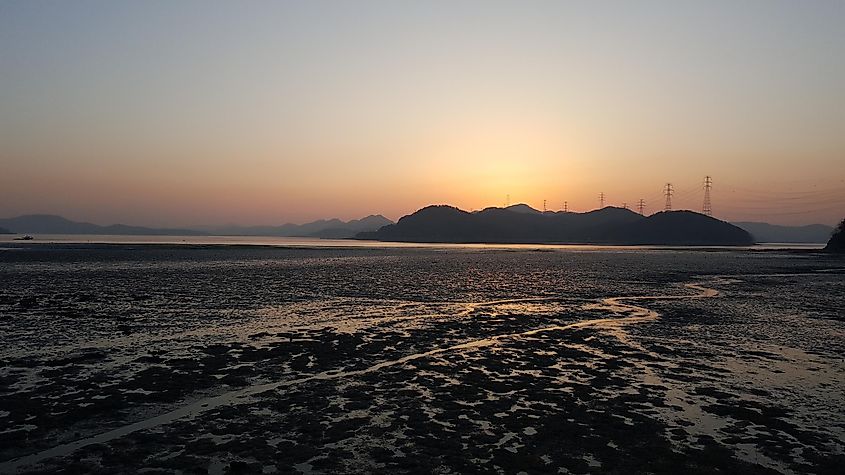
The Yellow Sea measures about 960 km from north to south and some 700 km from its east to west. The sea is one of the world’s largest portions of continental shelf submerged in water. Its maximum depth is about 152 m and it has an average depth of only 44 m. Some of the significant rivers that drain into the sea include the Chongchon, Hai He, Liao, Taedong, Yalu, and Yellow Rivers. More than 1.6 billion tons of sediments are annually received by the Yellow Sea, mainly from the large Yellow and Yangtze Rivers. The northern and the western shores of the sea are quite low, while the sea’s eastern shores are heavily indented and comparatively much rockier and higher than its western part. Many bays like the Bohai Bay, Laizhou Bay, Liaodong Bay, and the Korea Bay are also found here.
Some of the notable South Korean islands that are located in the Yellow Sea include Anmado, Baengnyeongdo, Deokjeokdo, Daebudo, Ganghwado, Gageodo, Heuksando, Jejudo, Silmido, Yeongjongdo, etc.
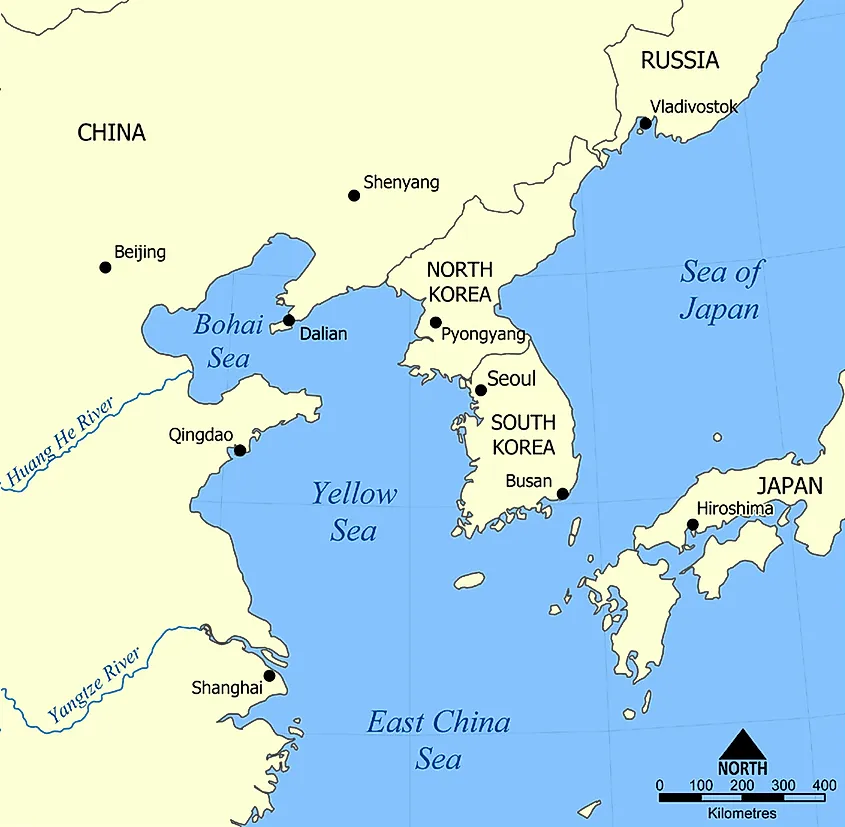
The Yellow Sea experiences a temperate monsoon climate. Cold and dry winds from the northwest prevail during the winter season while the summer months are relatively warm and humid. The average temperature ranges between -10 °C to 3 °C in January from north to south and between 23 °C to 26 °C in July. The northerly monsoons occur from late November to March while tropical hurricanes (typhoons) occur frequently between June and October. Sea fogs are also common in coastal regions.
Wildlife
The Yellow Sea is rich in seaweeds, and various invertebrates like crustaceans, clams, cephalopods, shellfish, etc. Some of the significant fish that are found here include cod, croakers, goby, eel, Japanese mackerel, lizardfish, Pacific herring, sea bream, etc. The intertidal mudflats of the Yellow Sea provide important sites for migratory birds of the East Asian-Australasian Flyway. Some of these significant migratory birds are black-faced spoonbills, Dalmatian pelicans, and little gulls. The Yellow Sea also serves as a critical breeding site for the threatened Saunder’s gull. The sea also hosts numerous marine mammals like spotted seals, finless porpoises, killer whales, minke whales, and false killer whales.
Economy
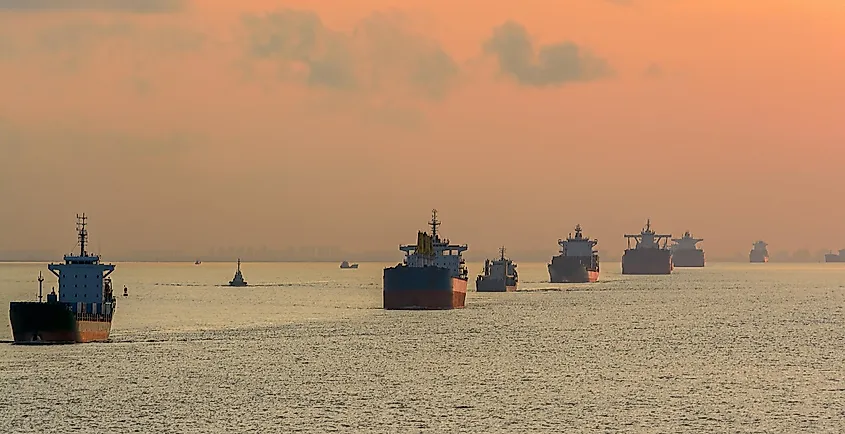
The rich fishing grounds of the Yellow Sea have been commercially exploited by the large Chinese, Japanese, and Korean ships for many years. Several tons of oil have also been successfully explored in the Chinese and the North Korean parts of the sea. The coastal regions of the Yellow Sea are very densely populated and more than 600 million people live in the sea’s catchment area. Some of the chief ports that are located along the Yellow sea include Dalian, Qinhuangdao, Qingdao, and Tianjin ports of China; Mokpo, Gunsan, and Incheon ports of South Korea; and Nampho port of North Korea.











